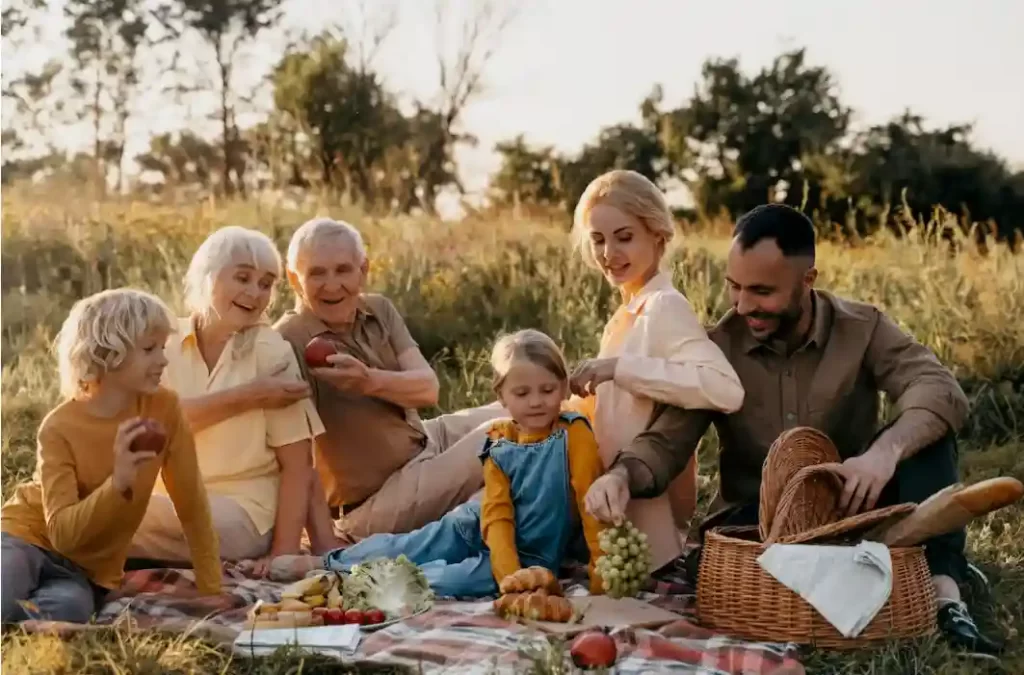Australia recognizes the need for people to have family and relatives in order to have an ideal life. For this reason, it has provided conditions so that an Australian citizen or permanent resident of this country can support his family to immigrate to Australia.
A person who is an Australian citizen or permanent resident must prove their financial ability to support their family within two years of their arrival. Sometimes this person is required to provide an Assurance of Support (AOS) as a financial sponsor of the family.
Australian Family Visa
What are the types of Australian family visa?
In general, the Australian family visa can be divided into several groups:
Parents visa
Marriage visa
Visa for children
Relative visa
Each of these groups includes several subclasses and subcategories, each of which has different conditions.
What are the Australian family visa requirements for parents?
Australian citizens or permanent residents can apply for a family visa for parents. To apply for this visa, your parents must meet the requirements for each subclass. Keep in mind that having physical and mental health requirements is also important.
Australian family visa for parents is divided into three parts:
Co-parent visas include subclasses 143, 173, 884 and 864
Subclass 173:
By receiving this visa, you can stay in Australia and work and study for 2 years. To apply for this visa, you must be approved in the family balance test, meaning that more than half of your children live in Australia.
Subclass 143:
Visa 143 is a permanent residence visa and you can work and study in Australia with it. Parents who live in Australia temporarily with visa 173 can also make their stay permanent by applying for this visa. One of the conditions for applying for this visa is the positive balance of family test.
Subclass 884:
To apply for this visa, you must have reached the Australian retirement age. The 884 visa is a temporary 2-year visa, during which you are allowed to work and study in Australia. This visa cannot be extended and you must take the necessary steps to obtain permanent residence.
Subclass 864:
The 864 visa is a permanent residence visa. To apply for this visa, you must have the Australian retirement age. People who reside in Australia with the 884 visa can obtain their permanent residence by applying for this visa. One of the conditions for applying for this visa is to be approved in the Balance of family test.
Non-participating parent visa including subclasses 804, 103
Subclass 804:
This visa is a type of permanent residence for parents who have reached the Australian retirement age. To apply for this visa, you must be approved in the Balance of family test. The cost of applying for this visa is much lower than the cost of cooperative visas. You should keep in mind that the time to get this visa is not known and it may take up to 20 years.
Subclass 103:
By receiving the 103 visa, you get permanent residence in Australia. One of the requirements for applying for this visa is to be approved in the Balance of family test. This visa is one of Australia’s low-cost visas, but like the 804 visa, it may take up to 20 years to get it.
Parent sponsorship visa includes subclass 870
Subclass 870:
870 visa has been activated since 2019. This visa is suitable for parents who do not intend to stay permanently in Australia and whose goal is to visit their children. By receiving this visa, you can live in Australia for 3 to 5 years. During this period, you are not allowed to work and study in this country, and you are not included in the general medical insurance of Australia. In the 870 visa, there is no need to test the balance of the number of family members (Balance of family test).
What is the retirement age in Australia?
The retirement age in Australia is changing and increasing. Therefore, the retirement age may vary depending on when you file your visa application.
If you have registered your application by July 1, 2021, you must be 66 years old. If you apply from July 1, 2021 to July 1, 2023, you must be 66 years and 6 months old for retirement age. If your application is registered from July 1, 2023 onwards, 67 years of age will be considered as the retirement age.

What is the Australian marriage visa?
Among the Australian family visas, we can mention the marriage visa. If your spouse is an Australian citizen or a permanent resident of this country, you can settle in Australia by obtaining a marriage visa. One of the conditions for applying for this visa is to legally register your marriage and prove your relationship with this person in the last 12 months. The applicant’s spouse provides the necessary financial support as a sponsor.
With this visa, you can stay in Australia for two years and work and study. After two years, if you take the necessary steps and submit sufficient documents, you can receive your permanent residence.
With a fiancee visa, your stay is for 9 months, and during this time you must register your official marriage.
Australian marriage visa has the following subclasses:
Subclass 309:
With the 309 visa, you can live in Australia for two years and work and study. After two years of living together, if you have the necessary conditions, you can apply for permanent residence. During this period, you have the right to use Australian public health services.
Subclass 100:
People who entered Australia with a 309 visa; After two years, they can apply for a 100 visa by presenting documents of cohabitation with their spouse. With this visa, you can live, study and work in Australia indefinitely.
Subclass 820:
This visa has the same conditions as the 309 visa, but you must be a resident of Australia to apply for it. You can enter Australia through other visas and then apply for the 820 visa. With this visa, you can live in Australia until the status of your permanent residence visa is determined. During this time, you have the right to work and study and you are allowed to use Australian public health services.
Subclass 801:
A person living in Australia with an 820 visa can apply for a 801 visa to obtain permanent residence. With this visa, you can get permanent residence in Australia and start working or studying.
300 visa for future marriage:
Visa 300 is also called engagement visa. With this visa, you can stay in Australia for 9 months and work and study. To apply for this visa, you must commit that you will officially marry your fiancé during your stay in Australia.
What is the Australian family visa for children?
Parents who are Australian citizens or permanent residents of this country can also apply for visas for their children under certain conditions.
Australian child visa includes the following subclasses:
Subclass 101:
If your child is outside of Australia, you can use the 101 visa to apply for their residence. Your child must be under 18 and not married or engaged. By receiving the 101 visa, a person obtains permanent residence in Australia and can study and work.
Subclass 802:
The conditions of this visa are the same as the 101 visa, but at the time of applying for this visa, your child must be in Australia. He can enter Australia through other visas and then file an 802 visa application.
Subclass 102 (adopted visa):
If a parent who is an Australian citizen or a permanent resident of this country has an adopted child outside of Australia, they can apply for their child’s residence through this visa. Your child must be under 18 years of age. With the 102 visa, he can live in Australia indefinitely and use the benefits of the Australian child visa.
Subclass 445:
If the father or mother of a child has received temporary residence in Australia through a marriage visa, he can apply for a 445 visa for his child. This visa is a temporary residence visa and is valid as long as the parent resides in Australia. In this visa, the person who is the sponsor of the child’s father or mother must also provide the necessary support for the child in the 445 visa.
Subclass 117 and 837 (orphan relative visa):
This visa is a permanent residence type. To apply for an orphan relative visa, it must be proven that the child’s parents have died, abandoned him, or are unable to support him.
From the legal point of view, the child should not have any problem to leave the country, in the sense that the legal guardian of the child is satisfied. If the child is in Australia and you apply for an orphan relative visa, you use subclass 837 and if the child is outside Australia, you use subclass 117.
What are the requirements for Australian family visa for relatives?
If a person is a citizen of Australia or has a permanent residence in this country, if he has the conditions, he can sponsor his relatives to immigrate to Australia.
Relatives visa is divided into several sub-classes:
Subclasses 114 and 838 (elderly relative visa):
This visa is a permanent residence visa. To apply for a 114 visa, the applicant must have reached the Australian retirement age and be financially or vitally dependent on a relative living in Australia. One of the conditions for applying for this visa is that the applicant is single, which means that he is not married, his spouse has died or they have been officially divorced.
If the applicant resides outside of Australia, he uses subclass 114, and if he resides inside Australia, he uses subclass 838.
Subclasses 116 and 836 (care visa):
If a person who is an Australian citizen or permanent resident is physically in need of care; Can sponsor an eligible relative as a guardian to immigrate to Australia. Keep in mind that the sponsor of the visa applicant can be a relative of the patient.
In the 116 visa, the applicant resides outside of Australia, and in the 836 visa, the person must be on Australian soil to take the necessary steps to apply for the visa.
Subclasses 115 and 835 (last surviving relative visa):
If all your close relatives and your spouse have permanent residence in Australia, you can use this visa. The applicant for this visa must be over 18 years old.
If the visa applicant resides outside of Australia, he must use the 115 visa, and if he resides in Australia, he must use the 835 visa.

What are the documents required to apply for an Australian family visa?
As mentioned, the Australian family visa has many branches, each of which requires documents to meet the conditions of that visa. In addition, the documents that are generally required are as follows:
• Valid identification documents
• A piece of photo in the stated dimensions
• Passport
• Marriage certificate in case of marriage
• Document confirming the family relationship with the sponsor in Australia
• Medical health certificate
• Completing visa application forms
• Clearances
• Payment of expenses
The mentioned documents must be submitted together with an official translation.

Final word
If one of your family members is a permanent resident in Australia, you must have thought about the Australian family visa. To get this visa, you need expert advice due to having different subclasses. By filling out the following form, Oceania Visa & Migration Services can be your companion and advisor in this path.













